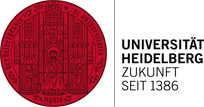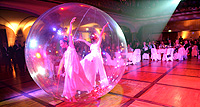Universal Dynamics

Photo: Alexis Bonnin (KIP)
Different physical systems – isolated from the environment and far from equilibrium – can behave the same. Quantum mechanically, this is the case if the dynamics of a many-particle system become universal. In two fundamentally different experiments, physicists from Heidelberg University and the TU Vienna (Austria) have now succeeded in verifying this universality in ultracold clouds of Rubidium atoms. The improved understanding of the systems studied permit making predictions for totally different systems. The research results were published in “Nature”.
The expansion of the Universe directly after the Big Bang, the ramifications of a heavy-ion collision in the particle accelerator at CERN, or clouds of atoms at ultracold temperatures – many isolated physical systems are naturally out of equilibrium, yet the relevant quantities are often hard to measure. This is different for ultracold atomic gases. “The high degree of control over our system allows us to set up interesting initial conditions. In the course of the dynamics we are able to measure precisely the universal observables, for example the state of the atoms, spatially resolved”, explains Prof. Dr Markus Oberthaler, founder of the Synthetic Quantum Systems research group at Heidelberg University’s Kirchhoff Institute for Physics.
In their experiment, the Heidelberg researchers prepared about 70,000 ultracold Rubidium atoms. They were thrown out of equilibrium by a rapid change in an external magnetic field. At ultracold temperatures around 10 nanokelvins and in perfect isolation from the environment, the atoms behave like magnets that interact with each other. The characteristics of the universal dynamics become observable only after – for experiments with ultracold atoms – long evolution times. “This requires an extremely stable experimental setup, but it does allow us to investigate the dynamics very precisely”, says Maximilian Prüfer, the primary author of the study.
The research group of Prof. Dr Jörg Schmiedmayer at the TU Vienna observed another type of universal dynamics. “Universality provides a new method to gain essential information about quantum systems usually not accessible in the laboratory”, says Jörg Schmiedmayer. Prof. Dr Thomas Gasenzer of the Kirchhoff Institute for Physics and Prof. Dr Jürgen Berges of the Institute for Theoretical Physics at Ruperto Carola were involved in these investigations. They are also co-authors of the Heidelberg study under the direction of Prof. Oberthaler.
The characterisation of quantum mechanical many-particle systems far from equilibrium is very important, for example, for understanding structure formation in nature. Markus Oberthaler emphasises: “The impressive result of both experiments is that they found two different universality classes. This suggests that we are on the track of a fundamental structure.” The work in Heidelberg and Vienna was conducted under the auspices of the “Isolated quantum systems and universality in extreme conditions” Collaborative Research Centre at Heidelberg University.

